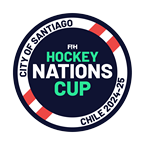
Monday 24 July 2017 marks three years until the Tokyo 2020 Olympic Games begin and hockey returns to the main stage once again.
Preparations have been ramping up over recent months as developments across the city progress ahead of the global event which will once again welcome the worlds top sporting stars and the millions of fans who follow them.
In 1964, the Tokyo Olympics transformed Japan after the country had been devastated by the effects and aftermath of the Second World war. 56 years later and the 2020 Tokyo Olympics are aiming to be the most innovative in history.
The three core aims of the Tokyo Organising Committee (TOCOG) are to ‘Strive for your personal best’, ‘Accept one another’ and ‘Pass on legacy to the future’ – all aims and values that resonate with the International Hockey Federation's (FIH) own key initiatives contained within the Hockey Revolution.
There will be 48.8 percent participation rate of female athletes, this is another alignment with the FIH – gender equality – with 2020 aiming to be the most gender-balanced Games in history.
With only three years until the Tokyo Olympics burst into life, already excitement and anticipation are building to a crescendo, in the Japanese capital and around the globe.
Many of the Olympic venues are still in planning stages; these will be located in two zones, the Heritage Zone and the Tokyo Bay Zone, and will reflect both tradition and the future.
FIH Director of Sport and Development, David Luckes, has been involved in the planning for the men’s and women’s hockey events at Tokyo 2020 since the city learnt its bid had been successful. "Progress continues with the planning for the hockey event at Oi Seaside Park in Tokyo," says Luckes.
"The venue will host two competition pitches, with pitch one having a capacity of 10,000 and pitch two with a capacity of 5,000. Currently, discussions are ongoing about securing a viable legacy between FIH, the Japanese Hockey Association (JHA) and the Tokyo Metropolitan Government which will retain pitch one as a legacy venue following the completion of the Games.
"As part of the planning process, FIH has regular calls with TOCOG alongside visits to sign off the venue design process and agree the detail of the services provided by the various functional areas".
The new hockey stadium is one of eight permanent venues to be built across the city. There are 40 venues in total, a mixture of new builds, existing facilities and temporary structures. The hockey venue is to the west of the Bay area and the plan is for the venue to be a multi-sport and hockey venue once the Games are completed.
Many of the original concepts that were the basis of the Tokyo bid are taking shape. One of the most striking symbols of any Olympic Games is the Olympic symbol. The 2020 design will reflect the Japanese love of indigo blue and will consist of 45 rectangular shapes, spelling out the Olympic 2020 emblem.
With just over 1000 days to go, the Tokyo Organising Committee has a number of landmark events planned. The Tokyo Education Programme, or Yoi Don, launched in April – Yoi Don is the signal for the start of a race or event and this aims to foster the core values of the Games in young people.
In September, the 2020 Participation Programme, which transcends the fields of sport, art, culture, will be initiated, while the mascot – which has huge significance and importance in Japan – will be unveiled in March 2018. From then on, the activity programme really ramps up and FIH will be working closely with TOCOG to keep all hockey fans up to speed with ticketing and event information.
And finally, in an innovative nod to Japan’s role as leader in the field of technology and its focus on sustainability, the medals that the winning hockey teams will be wearing after the finals on 8 and 9 August 2020 will all be made from recycled devices.
More about 3 years to go, click here.
To find out more about Tokyo 2020, click here.
#Tokyo2020






















